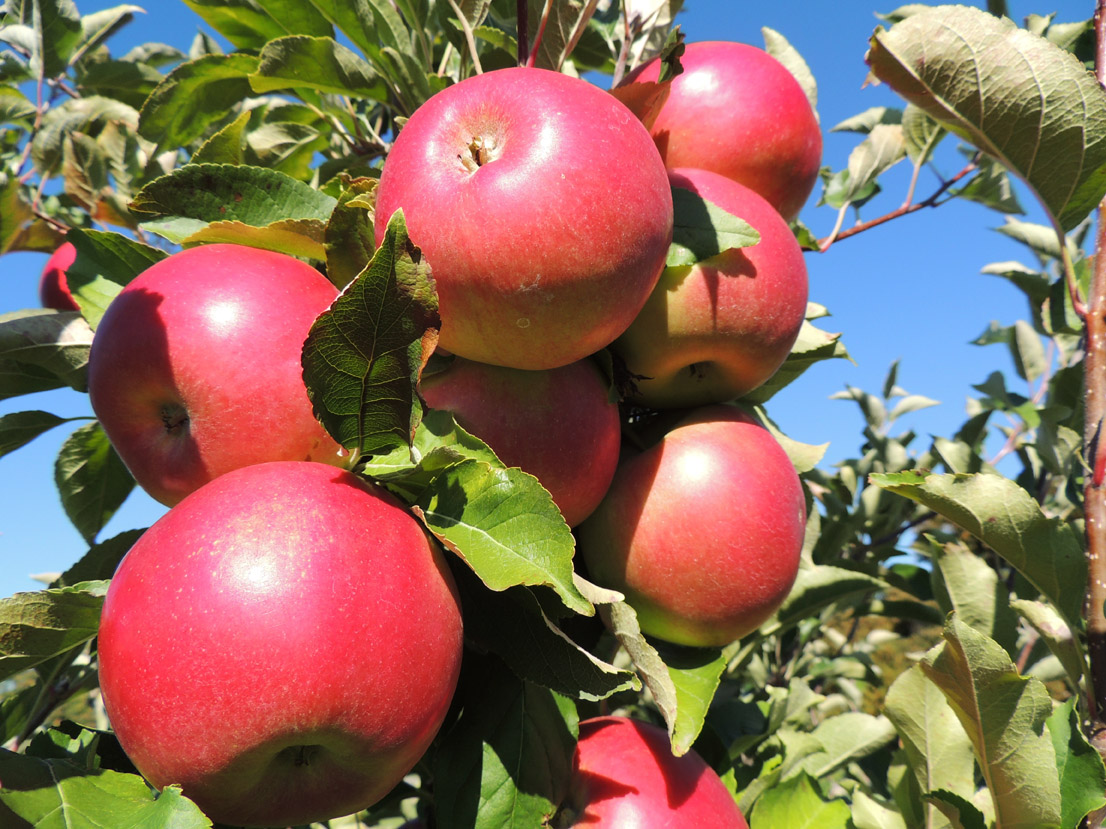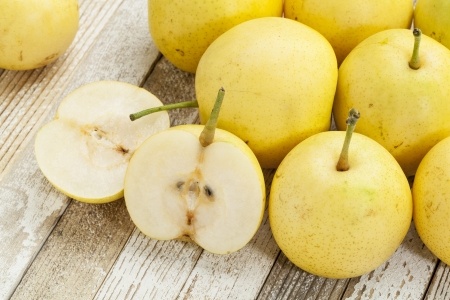Fall Fruit – Apples and Asian Pears
Apples
 The first local apples are in! Here are a few fun facts about apples that you may not have read anywhere else….
The first local apples are in! Here are a few fun facts about apples that you may not have read anywhere else….
- To add complexity and depth to pies and applesauce, use both sweet and apples and tart apples
- Apples should be picked when they reach their peak of ripeness; picked too early and they are sour; too late they are mealy.
- Some apples taste best right off the tree. Others improve with storage.
- Appearance does not reflect flavor. Perfect deep red shiny supermarket apples are generally less flavorful than less than perfect apples picked fresh at the local orchard.
- Orchards have vintage years in which weather, climate, soil, and management practices come together to produce a harvest with exceptional flavor.
- The flavors of apple vary among varieties, among fruits grown on the same tree, an even within different parts of a single piece of fruit.
- Apples may contain hints of these fruits and spices in their aroma: pineapple, pear, strawberry, cinnamon, grape, citrus, clove, coconut.
From Understanding Flavor
Asian Pears
 Asian pears (on sale this week $1.99/lb!) are crunchy more like crisp apples than other varieties of soft pears. They look more like apples too.
Asian pears (on sale this week $1.99/lb!) are crunchy more like crisp apples than other varieties of soft pears. They look more like apples too.
Asian pears are originally from China and Japan. They’re also referred to as Apple Pears or Chinese Pears. Asian pears are crunchy, juicy, and sweet – often exactly what we are looking for in a piece of fruit. Unlike other pear varieties, once they are harvested, the inside flesh does not ripen and become softer. Whereas most other pear varieties are best eaten when they have ripened to their perfect level of "softness," Asian pears are typically eaten when firm. You can also bake them in pies and crisps. Recipes below…
Asian Pear Recipes:
Arugula and Asian Pear Salad with Blue Cheese Dressing
Asian Pear Maple Crisp
Asian Pear Tart